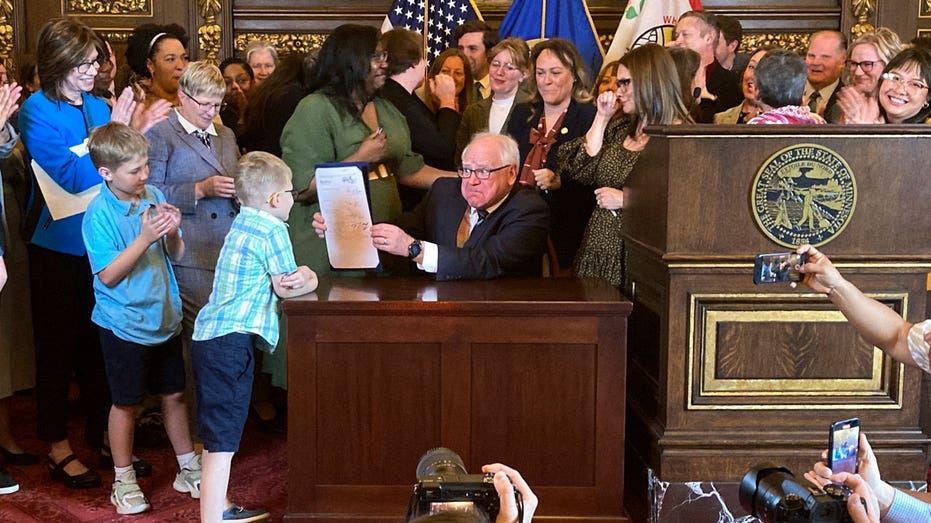Minnesota workers will be entitled to paid time off when they’re seriously ill or to care for newborns and loved ones starting in 2026 under a bill that Democratic Gov. Tim Walz signed Thursday, making his state the 12th to require those benefits.
The paid family and medical leave program will allow Minnesota workers up to 12 weeks a year off with partial pay to care for a newborn or a sick family member, and up to 12 weeks to recover from their own serious illness. Benefits will be capped at 20 weeks a year for employees who take advantage of both.
Business groups fought to block the proposal, warning that it would impose heavy costs and regulatory burdens on employers and aggravate their staffing problems. But it was hailed by supporters who said it would bring equality and fairness to the workplace.
MINNESOTA WRAPS UP BUDGET NEGOTIATIONS, DEMOCRATS REJOICE OVER KEY POLICY WINS
“Everyone deserves paid time away from work, to heal, to grow, and to live,” Lt. Gov. Peggy Flanagan said at the signing ceremony. “This time is not optional. It’s not a nice-to-have. It’s a must-have if we truly are going to be the best state in the country to raise a family.”
The program will operate similarly to unemployment insurance. It will be funded by a new 0.7% payroll tax on employers that will take effect in 2026. Employers can deduct half of their premiums from workers’ wages. The law contains protections against retaliation for workers who take the time off. It also includes premium relief for smaller companies.
Paid family and medical leave will dovetail with the state’s new earned sick and safe time program that takes effect on Jan. 1 to provide shorter-term relief. Employees will earn one hour of sick and safe time for every 30 hours worked, up to a maximum of 48 hours a year, unless the employer agrees to more.
Minnesota will become the 12th state plus the District of Columbia that have some form of a paid family and medical leave program. Walz said the legislators, activists and administration officials who developed it have worked closely with those states to learn from their programs and how to improve on them.
Jocelyn Frye, president of the National Partnership for Women & Families, said Minnesota will end up with one of the strongest programs in the country.
A national paid leave program was part of President Joe Biden’s original “Build Back Better” agenda and passed the U.S. House but didn’t make it into law. Frye said her group hopes Minnesota’s adoption will add to the impetus for national program someday. But she acknowleded that that will be difficult with the current divided Congress.
“Like so many issues, what happens in the states influences whether Congress takes up issues across the board, and paid family and medical leave is no exception,” she said.
MINNESOTA GOV. WALZ SIGNS OFF ON 2 GUN CONTROL BILLS
But John Reynolds, state director for the National Federation of Independent Business in Minnesota, called it a “deeply flawed proposal that will cost much more than expected and make it harder for small businesses to keep their doors open.”
Doug Loon, president and CEO of the Minnesota Chamber of Commerce, said the program could become the largest mandate on employers in state history.
“This massive policy will bring fundamental changes to every employer and employee in the state — from $1.5 billion or more in annual payroll taxes, unwarranted shifts in benefits, to state approved leave for employees,” Loon said in a statement.
But supporters said Minnesota needs to consider the costs of not offering paid leave. They said programs elsewhere have reduced infant and maternal mortality, made it easier for mothers to go back to work after giving birth and reduced reliance on social service programs.
“This is going to be a huge equalizer to address the deep and persistent disparities that exist in Minnesota,” said the lead House author, Rep. Ruth Richardson, of Mendota Heights. “This is going to ensure people who have been left out of paid leave programs will for the first time have the ability to care for themselves and not choose between a paycheck and their loved ones.”
























